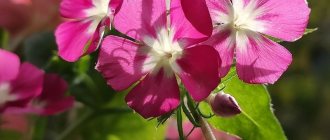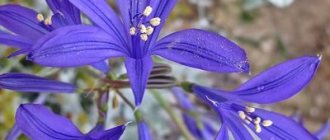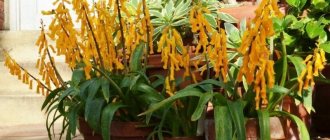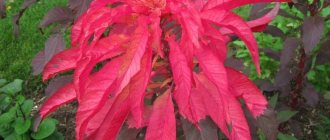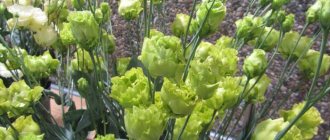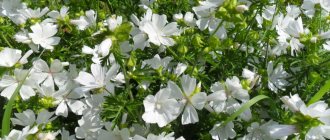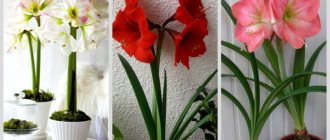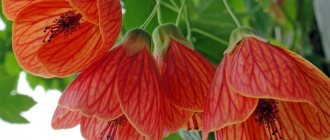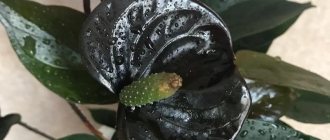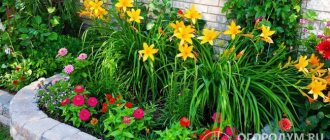Book | Video | About the project | Contacts | Sitemap | Forum | Blog | Construction | Eng
Home > Ural Mountains > Plants of the Urals
Walking through the Ural forests, we come across a wide variety of different plants that caught our eye with bright colors. But without a special botanical education, we often do not know at all what kind of plants they are and what medicinal benefits they can bring us. In this article we will look at the medicinal plants of the Urals, their healing properties, methods of use, where you can find them, and also see them in the photo.
Adonis spring
A perennial herbaceous plant from the buttercup family with a thick short rhizome and several stems reaching 30-50 cm in height. The leaves are twice or thrice pinnately dissected into narrow lanceolate lobes. The flowers are large, golden yellow, with numerous petals and a large number of stamens and pistils. Small fruits are collected in fruit clusters. Blooms in May - June. The plant is poisonous .
Adonis grows on dry open slopes and forest edges. Distributed in forest-steppe regions of the Urals. The entire above-ground part of the plant is harvested from the beginning of flowering until the fruit begins to flow. Dry quickly, avoiding direct sunlight. Adonis herb contains cardiac glycosides. Herbal infusions are used for heart failure, increased nervous excitability, and dropsy as a diuretic. A decoction of rhizomes is drunk for pneumonia. To prepare a decoction, pour one tablespoon of dry herb into two glasses of boiling water, leave for 20 minutes, filter and take a tablespoon 4 times a day.
Lungwort
Lungwort grows in Europe. This plant is rich in microelements and a large amount of mucus and copes well with the following problems:
- relieves inflammation;
- promotes the removal of sputum;
- cleanses the blood;
- relieves pain;
- normalizes the nervous system;
- improves immunity;
- replenishes potassium and iodine deficiency;
- normalizes acid-base balance;
- improves the functioning of the endocrine glands;
- prevents the formation of blood clots.
The plant has diaphoretic and diuretic properties and is also an excellent pain reliever. The components included in its composition help normalize metabolism and increase the body's protective functions.
Calamus marsh
A perennial herbaceous plant from the aroid family with a creeping fragrant rhizome, white and porous inside. Lily leaves, reaching a meter in length, emerge in bunches from the upper end of the rhizome. It blooms in June-July with small greenish-yellow flowers collected in a spadix. The whole plant smells nice. Calamus reproduces vegetatively - by segments of rhizomes. It grows along the banks of slow-flowing rivers, lakes, and in wetlands. Calamus comes from India and China and was brought to the Urals during the Tatar-Mongol invasion. The rhizomes of calamus are mainly used, which are collected in late autumn, washed and air-dried. Store in closed jars.
In scientific and folk medicine, infusions and decoctions of calamus are used for gastritis, gastric and duodenal ulcers, bronchitis, cough, pneumonia, and tuberculosis.
Marsh rosemary
An evergreen shrub from the heather family, 1 m high. Grows in peat bogs and wetlands. The leaves are leathery, with downturned edges and rusty-felt pubescence on the underside. White, regular-shaped flowers are collected in umbrella-shaped inflorescences at the top of the branches. Blooms from May to July. The fruit is a drooping capsule. The entire plant is poisonous . The tops of branches with leaves are used for medicinal purposes. Drying wild rosemary branches should be done in a well-ventilated area, since the smell of essential oils contained in the leaves causes headaches and sometimes respiratory and cardiac problems.
In folk medicine, wild rosemary is used in the form of decoctions and infusions for pulmonary tuberculosis, cough, asthma, whooping cough, bronchitis, as well as in the treatment of eczema, gout, scrofula, chronic rheumatism, and neurasthenia. To prepare the decoction, brew 2 tablespoons of leafy wild rosemary branches in a liter of boiling water, infuse and drink a tablespoon 3-5 times a day.
Pansies
This plant is also called tricolor violet, St. John's wort, Maryansky royal tree.
Interesting! Popularly accepted names: hatchets, trichomes, brother and sister, field pansies, moths, half-flowers.
A perennial, hardy herbaceous plant up to 40 cm high with alternate, petiolate leaves that become small at the top of the stem. Flowers on thin stalks are tricolored, tetrahedral, reaching 6 cm in diameter. It grows everywhere. Used in medicine for respiratory diseases.
Ledum (Klopovnik)
A perennial shrub up to 2 m high with small blue-green leaves along the stem. The flowers are crimson, four-lobed, fragrant, reaching 4 cm in diameter. They are numerous in umbrellas. It grows everywhere. Used in cosmetology and medicine for whooping cough and rheumatism.
Valerian medicinal
Important: This plant is also called cat root, cat grass, mauna grass, oregano, odolyan, earthen frankincense, fenugreek, marshmallow, pink yarrow.
A perennial herbaceous flower growing up to 150 cm in height, with long-tailed leaves that do not densely cover the stem. The flowers are small, pale pink, fragrant, reaching 5 mm in diameter. They are collected in umbrella-shaped inflorescences. It grows everywhere.
Used in medicine as a sedative and antispasmodic. Valerian is also used in cosmetology.
Cornflower blue
Interesting! Common names: Oxysize, blue, Blavatsky.
Perennial meadow flower, grows up to 1 m tall. The leaves are lanceolate, ovate, blue-green. The flowers are blue in various shades and reach a diameter of up to 5 cm. They are collected in basket-like inflorescences. It grows everywhere.
Important: In medicine it is used for conjunctivitis, inflammation of the eyelids, eye fatigue and as an anti-inflammatory and disinfectant. Cornflowers are also used in cosmetics.
Dianthus meadow
A perennial herbaceous dicotyledonous flower growing to a height of about 40 cm with hairy, linear leaves. The flowers, which have five serrated petals, can be red, pink or, less commonly, white. This meadow plant is protected in the Saratov region.
Important: Used in medicine to treat infertility.
Meadow geranium
A perennial herbaceous dicotyledonous flower up to 80 cm high with five separate stem leaves below and three separate leaves above. The flowers are large, wide with five petals of lilac color. There are a lot of them. It grows everywhere.
Important: In medicine it is used to prepare infusions and decoctions for insomnia.
Elecampane
A perennial herbaceous dicotyledonous plant up to 100 cm high, with narrow, massive, light green leaves. The flowers are orange or yellow, arranged singly or in disc-shaped clusters. It grows everywhere.
Important: In medicine it is used as an expectorant for chronic bronchitis, tracheitis, and pulmonary tuberculosis. It is also often used in cosmetology.
Delphinium (larkspur, spur)
A perennial shrub up to 150 cm high with arrow-shaped leaves growing from the root zone. Flowers are small, pyramidal inflorescences located on a long stem. They can be of different shades: white, blue, pink, lilac, red, yellow. It grows in regions with warm climates.
Important: Do not use the plant in its pure form, as it is poisonous.
Used in soap production. Used medicinally to treat respiratory conditions such as asthma, severe cough and pneumonia, as a pain reliever.
St. John's wort (common)
A perennial herbaceous flower that grows to a height of 80 cm. Elliptical, dark green leaves arranged symmetrically on an erect stem. The flowers are bright yellow, in corimba-like inflorescences, growing in Russia and Ukraine.
Important: In medicine it is used as a medicinal plant to treat infected wounds, ulcers and burns. In dentistry, St. John's wort tincture is used as a mouth rinse for gingivitis and stomatitis.
Iris (Iris, Cockerel)
A rhizomatous perennial up to 60 cm high with flat, paniculate leaves collected at the base of the stem, which can be single or collected in bunches. The flowers are yellow, violet, white, purple, burgundy, pink, and can be single or collected in clusters of 3. It grows everywhere.
Important: Used in cosmetology to remove freckles, pimples, wrinkles and stimulate hair growth.
Fireweed angustifolia (Ivan-tea)
Interesting! Also known as plane tree, matrona, breadfruit, miller, Koporsky tea, crinella, Russian tea, koporka, wild flax.
Perennial herbaceous flower, grows up to 50-150 cm in height. The leaves are linear-lanceolate, pointed, dark green, densely located on an erect, rounded stem. The flowers are pink, four-petaled with a double perianth, ovoid, reaching a diameter of 3 cm. They are located in an apical rachis 45 cm long. It grows everywhere.
Used in medicine and cosmetology as an anti-inflammatory, soothing and inflammatory agent. Also for the treatment of psoriasis, lichen ruber, neurodermatitis, eczema.
Interesting! It is collected in the summer, dried, fermented and a very healthy and tasty tea drink called Koporye tea is obtained.
Clover pink
A perennial herbaceous flowering plant up to 80 cm high, with oval, triangular leaves and a tubular, branched, erect stem. The flowers are pink or raspberry-coral, collected in spherical inflorescences with heads. It grows everywhere. An excellent honey and fodder plant.
Important: Used for boils, burns and rheumatic pain.
Common bluebell
A rare biennial herbaceous flower that grows up to 70 cm in height and reproduces by self-sowing. The leaves are small, arranged in rows on a vertical, slender stem. The corolla is bell-shaped. The flowers are purple, collected in panicles or panicle-like inflorescences. Grows in temperate climates.
Important: The plant is used as an anti-inflammatory, adhesive, analgesic and soothing agent for skin diseases.
Lily of the valley
A perennial herbaceous flower of the lily of the valley family, growing up to 40 cm in height with large, oval, light green leaves arranged symmetrically in pairs at the base. The stem is slender, bare, erect. The flowers are small, white, fragrant, collected in a spike-shaped inflorescence. It grows everywhere.
Important! In folk and classical medicine, lily of the valley is used to prepare tinctures for neuroses. It is also used in cosmetics and soap making.
Common flax
An annual herbaceous flower, up to 80 cm high, propagated by self-sowing. Narrow, small leaves, symmetrically arranged on an erect, branched stem. The flowers are blue, five-petaled, solitary on long stalks. It grows everywhere.
Important: Linen is used in cooking, cosmetics and textiles. In medicine, the plant is used as a mild laxative for spastic constipation, and also externally for burns.
Common toadflax
A perennial herbaceous plant of the paniculaceae family, growing up to 90 cm in height, with small, linear, pointed leaves, densely arranged on an erect stem. The flowers are small, yellow with an orange center, collected at the top in clusters up to 15 cm. It grows everywhere.
Important: The plant is used in floriculture. In medicine, it is used for skin diseases, in the treatment of urolithiasis and gallstones.
Lupine
A perennial subshrub up to 80-120 cm high with compound leaves consisting of long, narrow lobes. Stems are woody, erect, with variegated foliage. The flowers are zygomorphic, dark blue or purple, collected in apical inflorescences in the form of a cluster. Grows in temperate climates.
Important: In medicine it is used for type 2 diabetes, pain and spasms. It is also used in cosmetics, floristry, pharmacology and the food industry.
Creeping buttercup
A perennial herbaceous plant up to 15-40 cm high with trifoliate, petiolate, basal leaves. The stem is thick and creeping. The flowers are fragrant, five-lobed, golden yellow, arranged solitary. It grows everywhere.
Important: Used in folk and classical medicine to remove warts, scabies and purulent wounds in animals.
Field poppy (self-seeded)
An annual herbaceous flower, grows to a height of 30-80 cm, propagated by self-sowing. The leaves are large, alternate, pinnate, with a gray-green tint. The stem is branched with dense bristles. The flowers are large in diameter, up to 7 cm red or scarlet, consist of petals in 2 tiers and black stamens. They are located singly on long, strong stems. It grows everywhere.
Important: Used in alternative medicine as a cough syrup and sedative.
Coltsfoot
A perennial herbaceous flower of the Asteraceae family, growing up to 30 cm in height, with basal, oval or heart-shaped leaves separated by veins. The stem is erect. The flowers are yellow, dandelion-like, solitary. Grows in temperate climates. Excellent honey bee.
Important: In medicine, the plant is used externally to treat skin infections and wounds. It is considered an excellent expectorant.
Lungwort
A perennial herbaceous flower growing up to 30 cm in height with lanceolate, oval leaves. The radial leaves are larger than the stem leaves, the stem is erect and covered with hairs. The flowers are blue or blue bell-shaped with a double perianth. It grows everywhere.
Important: The plant is used in cooking, as well as in traditional and classical medicine. Seaweed tea is prescribed for sore throat, cough, dysentery and diarrhea, as well as bladder problems.
Dandelion
A perennial herbaceous flower of the Asteraceae family, up to 60 cm high with feathery, spiny leaves. The stem is multi-petalled, erect. The flowers are yellow, solitary. Rich, white sap is present in all parts of the plant. It grows everywhere.
Important: Used in the food industry, medicine, cosmetology and animal feed. Dandelion infusion and decoction are used for pancreatitis, gastritis, cholecystitis, constipation and diabetes.
Interesting! Royal jelly and dandelion are similar in flower shade and belong to the Asteraceae family. However, these are different types. They vary in leaf shape. Dandelion leaves are oblong, and comfrey leaves are wide.
Medicinal comfrey or larkspur
A perennial herbaceous flower growing up to 100 cm in height, with feathery green oblong leaves. The stem is erect, branched, and covered with stiff hairs. The flowers are bell-shaped and purple at the top of the stem. It grows everywhere. Excellent honey bee.
Important: In medicine, milk thistle is used to treat wounds, ulcers, bone ailments, rheumatoid fever, gout, osteochondrosis, arthritis, arthrosis, periostitis, dislocations and bone fractures.
Shepherd's Purse
A perennial herbaceous flower of the cabbage family, growing up to 60 cm in height, with small, alternate, heart-shaped leaves. The stem is straight, folded. The flowers are small, white, collected at the top of the stem. It grows everywhere.
Important: In gynecology, use the plant to treat uterine atony and uterine bleeding. The aerial part of the flower is used in veterinary medicine for diarrhea and internal bleeding.
Medicinal primrose or spring primrose
A perennial herbaceous flower growing to a height of about 80 cm, with light green, pinnate leaves clustered at the root zone. The stem is straight, bare. Yellow, five-lobed flowers collected in umbellate inflorescences. It grows everywhere.
Important: In medicine it is used to treat bronchitis, pharyngitis, osteochondrosis, and intervertebral hernia. It is also used as an ornamental plant and in the food industry.
Tansy
A perennial herbaceous flowering plant growing up to 50-150 cm in height, with palmate-serrate leaves. The stems are straight, branched at the top. The flowers are yellow, small, tubular, collected in umbrella-shaped inflorescences. It has a sharp camphor aroma. It grows everywhere.
Important: Pansies are used in food, classical and alternative medicine. It helps fight worms and is also used as a choleretic agent for liver diseases.
Ivy
A perennial shrub with dark green, angular, lobed leaves and a slender, climbing stem. The flowers are small, white, collected in inflorescences from above. Grows in temperate climates.
Important: In folk and classical medicine, ivy is used as an expectorant for diseases of the respiratory system, as well as for diseases of the digestive tract, gout, rickets, and tuberculosis.
Wormwood
A perennial herbaceous shrub up to 50-200 cm high with long pinnately divided leaves and an erect, branched stem. All wormwood is silvery-green. The flowers are yellow, small, like spherical baskets, located symmetrically along the entire length of the stem. It has a sharp camphor aroma. It grows throughout the area.
Important! Used in cooking to repel insects. It is used in medicine as an anthelmintic, anti-inflammatory, analgesic and wound healing agent. It is also used in the treatment of gastritis, peptic ulcers, and as a balm and poultice for bruises, purulent sores and ulcers, and for allergies.
Lumbago (Sleep-grass)
A perennial herbaceous flower up to 40 cm high with petiolate leaves in a rosette at the base. The stem is grayish, densely hairy. The flowers are large, purple with sharp petals. It grows everywhere.
Important: Classical medicine uses it as an expectorant. Also used in veterinary medicine. Poisonous.
Chamomile
A perennial herbaceous flower of the Asteraceae family, growing to a height of 30-80 cm, with small, narrow, sculptured leaves and an erect, branched stem. The flowers are white with a yellow center, collected in hemispherical baskets. It grows everywhere.
Chamomile is used in cosmetics, gardening and floriculture. Used to treat diseases of the digestive tract. Chamomile decoction is used to rinse the mouth for gingivitis, stomatitis, pharyngitis, and sore throat.
Meadowsweet or Meadowsweet
A perennial herbaceous flower of the Rosaceae family, up to 80 cm high, with ligulate leaves on long petioles, arranged in the shape of a star. The stem is simple, pinnate. The flowers are small, white or pink, collected in panicles. They have double inflorescences. Grows in temperate climates.
Important: The plant is used in traditional and classical medicine and the food industry. Used for liver detoxification, and also as an antibacterial, antiviral, sedative, anthelmintic, and antiulcer agent.
Yarrow or Cut Herb
A perennial herbaceous shrub of the Asteraceae or Asteraceae family with serrated, toothed or pinnately divided leaves. The stem is straight or slightly curved at the base. The flowers are white, collected in an inflorescence similar to a luminary, consisting of small baskets. It grows everywhere.
Important: medicinal plant, used in medicine as an astringent.
Field tulip
A perennial herbaceous bulbous flower of the lily family with smooth or wavy, oblong leaves growing from the base of the stem towards the center. The stem is straight, dense, with one stem. A young plant has 1 leaf, an adult has 2-4 leaves of blue-green color. The flowers are red, yellow, white or pink, solitary, six-petaled with many stamens.
Important: ornamental plant.
Horsetail
A perennial herbaceous flower of the horsetail genus, the horsetail family, growing up to 40-60 cm in height with brownish or pinkish generative stems, brownish triangular leaf spines and a pycnocarpous tip. The leaves are arranged in whorls of 6-12 pieces, which can be free or compound. It grows in subarctic, temperate and tropical climates.
Important: Horsetail is used in classical and alternative medicine, and the food industry. Used to treat edema, heart and lung failure.
Common chicory
A perennial herbaceous flower of the genus Chicory, family Asteraceae, growing up to 15-150 cm in height, with pinnate basal leaves, pubescent along the edges, tapering to a petiole at the base. A weed with an erect, staminate, green or bare green, rough stem. The baskets are single or collected in groups at the top of the stem. The flowers are blue or white, ligulate. Corolla 15-25 mm long. It grows everywhere.
Important: The plant is poisonous and is used for cooking. In medicine it is used to treat chronic cholecystitis, pneumonia, gastrointestinal diseases, poor digestion, liver cirrhosis, and jaundice.
Thyme, thyme
Important: This plant is also called: Bogorodskaya grass, thyme, thyme, heather, frogwort, boron pepper, chebarka, fly agaric, cistus.
A perennial herbaceous flower growing up to 40 cm in height, with thin stems and thin, small, green, oval leaves. The flowers are pinkish-purple, fragrant, collected in small, oblong inflorescences. Grows in Eastern Europe, Western Siberia, Eastern Russia and the Caucasus. This is an ornamental plant.
Important: Thyme is used in cosmetology. Also in medicine as a diuretic, anticonvulsant and sedative, for whooping cough, neuralgia, and stomach cramps.
Ramson, Bear onion
A perennial herbaceous flower growing up to 50 cm in height, with oblong, pointed leaves. The flowers are white in the shape of a hemispherical umbrella. Blooms in May/June. It is native to Central, Northern and Southern Europe, as well as Turkey.
Important: This is a cultivated edible plant.
Thistle
A spiny herbaceous flower growing up to 150 cm in height, with an erect stem and large, hard and spiny leaves. The flowers are pink or purple, like a basket. Blooms in July and August. Grows in Central Europe and Asia, North Africa and the USA.
Important: In classical and alternative medicine it is used to improve heart function, increase vascular tone, blood pressure and intestinal tone, and increase urine outflow. It is especially often used as an anticonvulsant.
Celandine
A perennial herbaceous shrub up to 50-100 cm high, with an erect, branched stem and lyre-shaped dark green leaves. The flowers are yellow and arranged in the shape of an umbrella. Blooms in May and August. It grows everywhere.
Important: Used in medicine as a local anti-inflammatory agent for skin diseases such as psoriasis, eczema, dermatitis.
Sage
Herbaceous perennial, subshrub 20-70 cm high with oblong gray-green leaves. The flowers are blue-violet, pink or white, collected in clusters. Blooms from May to July. It grows everywhere.
Important: Actively use sage in cosmetology. In medicine it is used to treat inflammatory diseases of the oropharynx and nasopharynx.
Rosehip cinnamon
A thorny perennial shrub up to 200 cm tall with unpaired leaves with 5-7 slots. The flowers are pink to dark red, arranged singly or in groups of 2-3 pieces. Blooms from May to July. Grows in Europe and Central Asia. A medicinal plant, used medicinally as an eye balm and gargle.
Stock rose
Also called mallow.
A perennial or biennial herbaceous flower growing up to 200 cm in height, with alternate leaves and a herbaceous stem, reproducing by self-seeding. The flowers are white, pink, yellowish, cream or pink with 5 intersecting petals. It grows everywhere.
Important: has decorative and medicinal properties. Used to enhance red color in winemaking and cooking. In medicine it is used to treat gastritis and colitis.
Echinacea
A perennial herbaceous flower growing up to 100 cm in height with a straight, coarse stem. The leaves are wide, tapering to a long petiole. The flowers are pink to reddish-brown, large and collected in baskets up to 15 cm in diameter. It is found in the eastern United States.
Important! It has both decorative and medicinal properties. Echinacea is used to boost immunity, treat wounds, smallpox, septicemia and giardiasis.
Eschszolzia
Perennial herbaceous sun-loving flower, grows to a height of 20-45 cm. Triangular leaves on long petioles. The flowers are cup-shaped, white to orange. Blooms from June to October. It is native to western North America. The plant is decorative.
Important: In medicine it is used as an antispasmodic and mild anesthetic.
Snooze
Perennial plant of the genus Umbellifera. The stem is straight, branched at the top, reaching up to 1 m in height. The leaves are longitudinally ovate, pointed, up to 8 cm long. It grows in mixed forests, shrubs and clearings and causes a lot of trouble for gardeners, as it multiplies quickly and fills everything around. Shade resistant. Suitable for eating, in salads, cabbage soup and borscht instead of cabbage.
Used in medicine as a remedy for burns.
Very difficult to get rid of. It is necessary to reduce the acidity of the soil. The process is long. Chalk, lime or dolomite will gradually reduce the number of shoots, and over time the weed will move to a place where it feels more comfortable.
Henbane black
A biennial herbaceous plant from the Solanaceae family with an erect stem. The leaves are oval, toothed, stalk-embracing, arranged alternately. The flowers are dirty yellow, with purple veins, collected at the tops of the stems. The entire plant is covered with sticky hairs. The fruit is a two-lobed capsule with a lid containing small seeds. Blooms from June to August. Henbane grows in weedy places, fallow fields, in vegetable gardens and courtyards, near homes, along roads. The plant is very poisonous , so care must be taken when collecting it.
For medicinal purposes, the basal (rosette) leaves of the first year are collected, as well as stem leaves and grass - the entire above-ground part at a height of 8-10 cm from the ground during the flowering period. Henbane preparations are prescribed orally as an antispasmodic and analgesic. Externally, for rubbing, bleached oil is used as an anesthetic for rheumatism, neuralgia, myositis, and gout. The first signs of henbane poisoning: dry mouth and throat, difficulty breathing, dilated pupils, nausea, vomiting, headache, increased heart rate, severe agitation, delirium. It is necessary to urgently consult a doctor.
Chicory
Chicory is an asteraceous perennial plant with a spindle-shaped and thick root. The entire plant contains milky sap.
Chicory is found in Ukraine and Russia. It grows on borders, hills and along roads. The plant is grown for medicinal purposes in many countries.
Chicory normalizes metabolism in the body and is able to remove all toxins from the body. Chicory cleanses the kidneys and helps improve the condition of diabetics. In addition, it is used to improve blood composition. Chicory stimulates appetite, improves intestinal activity, and is also an excellent remedy for heartburn. Due to the ability of chicory to increase the overall tone of the body, it is used instead of coffee beans. A drink made from chicory cleanses blood vessels and relieves tiredness and tiredness.
Chicory has anti-inflammatory and antibacterial properties. It is used as an antipyretic for colds and other diseases.
Siberian hogweed
A perennial, pubescent plant from the Umbelliferae family, with large sessile pinnately divided leaves, 90-150 cm high. Small greenish-white flowers are collected in complex multi-rayed umbels. The fruit is a flat two-seeded seed with wide wings. Blooms in July-August. It grows in bushes, forest edges, in damp meadows, along the banks of rivers and streams in the forest and forest-steppe zones of the Urals. Roots, leaves and seeds are used for medicinal purposes. The roots are collected in September-October. Leaves - in June-July. Seeds - in September.
In folk medicine, an infusion of the herb and a decoction or infusion of the roots are prescribed to improve digestion. Hogweed is used for skin diseases, and as a sedative, for convulsions of various origins, epilepsy and other nervous diseases, as well as for cancer. Hogweed is edible and is used to season soups and borscht. Salads are prepared from leaves, shoots and rhizomes.
Cowberry
An evergreen shrub from the lingonberry family, up to 30 cm high, with a creeping rhizome. The leaves are alternate, overwintering, thick, leathery, with glands in the form of brown dots on the underside. The flowers are pale pink, in short drooping racemes. The fruit is a dark red berry. Blooms in May-June. Distributed in mixed and taiga forests, swamps, and moss-lichen tundra.
In medicine, lingonberry leaves are used, which should be collected before flowering. Lingonberry leaves are used as a diuretic for low acidity, liver disease, gout, bedwetting in children, rheumatism, and kidney stones. With short-term use of an infusion of lingonberry leaves, the blood sugar level decreases. Boiled lingonberries with honey are recommended for tuberculosis. Due to the benzoic acid content in lingonberries, the berries can be stored without sugar. The peoples of the Northern Urals - the Khanty and Mansi - collect the juice of lingonberry leaves during flowering and use it to treat radiculitis: rubbed into sore spots for 5-6 minutes 2-3 times a day.
Cornflower blue
An annual herbaceous plant from the Asteraceae family. Leaves are lanceolate. Blue flowers are collected in baskets; the edges are funnel-shaped, the middle ones are tubular, with a purple tint. Cornflower blooms from May to August. Grows like a weed in rye crops. The marginal flowers have medicinal uses. An infusion of flowers has a diuretic, choleretic, and antifever effect. Therefore, it is used mainly for diseases of the kidneys and bladder. It also helps with coughs, constipation and stomach pain.
To prepare the infusion, pour a teaspoon of marginal flowers into a glass of boiling water and leave for an hour. Drink 1/4 glass 3 times a day 20 minutes before meals. A decoction of cornflower (about a handful of petals in half a liter of water, boil for 5 minutes) in the form of lotions is used in the treatment of conjunctivitis and as a cosmetic for enlarged skin pores.
Black crowberry
An evergreen branched, creeping shrub with dark brown leaves from the crow family. The leaves are small, elliptical. The flowers are axillary, pink, appear in May-June. The fruit is a black berry. It grows in peat bogs, in damp places in the tundra and polar-arctic zones of the Polar, Subpolar and Northern Urals.
Crowberry has long been known as a sedative. Therefore, an infusion of the herb (a tablespoon of herb in a glass of boiling water) is used for fatigue, headaches, nervous functional disorders, and also against scurvy. In Tibetan medicine, crowberry is used to treat kidney disease and anthrax. In Transbaikalia, an infusion of the herb is used in the treatment of epilepsy and paralysis. Nenets, Khanty and Mansi tie crowberry branches, soaked for half an hour in warm water, to wounds and abrasions for faster healing.
Crow's eye
A perennial herbaceous plant from the linear family, with a creeping rhizome and an erect stem. The leaves are a whorl of four leaves with a greenish-yellow flower at the center. Blooms in June-July. The fruit is a bluish-black berry. The entire plant is poisonous . Crow's eye grows in shady deciduous, mixed and taiga forests, on moist soil.
For medicinal purposes, take a fresh plant. Alcohol tincture 10% in the form of drops is used for headaches, migraines, drowsiness, bronchitis, mental disorder, nervous twitching of the face. The internal use of crow's eye, as a highly poisonous plant, requires great caution! All parts of the plant have different effects: the rhizomes have an emetic effect, the berries have an effect on the heart, and the leaves have an effect on the nervous system. In homeopathy, decoctions of the plant are taken for headaches, increased heartbeat, hearing impairment, and eye diseases. An infusion of 1 kg of dry plants per 10 liters of water is used to spray gardens and vegetable gardens against pests.
Buttercup
Buttercup grows along rivers, in lowlands, near water. Translated from Lat. means "frog". People also call it “night blindness”, “mountain flower” and “pimple”. The mountains of Australia are considered the homeland of Buttercup (I was surprised by this).
In Russia you can find up to 40 species, among which the most common are creeping buttercup, acrid buttercup, multifloral buttercup, poisonous buttercup, and water buttercup.
Cultivated forms of buttercup are used in flower beds, but I would be careful not to do this, since all parts of the plant are poisonous.
However, in small concentrations it is not toxic and can be very effective in relieving many painful conditions. So, fresh buttercup leaves are used to treat joint pain externally. They are also used as a blister plaster for old boils and carbuncles that cannot open, and for other pustular diseases. A decoction of fresh buttercup leaves and flowers, taken in small quantities, treats stomach pain and headaches.
Also, buttercup preparations can stimulate the central nervous system, increase hemoglobin and have a bactericidal and antifungal effect. Traditional medicine does not use buttercup in the production of medicines, however, recent studies have shown its effectiveness in the treatment of skin tuberculosis.
Blueberry
A shrub from the heather family, 80-100 cm high, with gray smooth curved branches. The leaves are obovate, bluish below. The flowers are pink, spherical-bell-shaped. The fruit is a juicy berry, bluish-black, with a bluish bloom. Ripens in July-August. You need to pick the berries carefully, as they are very delicate. Dry in a shaded place with good ventilation. Blueberries grow in damp places, in moss swamps, and in the moss-lichen tundra of the Ural Mountains.
Leaves and berries are a good antiscorbutic remedy and are used in the treatment of diabetes and constipation. A decoction of the branches helps with heart pain; the berries are used in the treatment of giardiasis angiocholecystitis.
Highlander
An annual herbaceous plant from the buckwheat family, with a knotty stem 30-80 cm high. Lanceolate, trumpeted leaves are located opposite. The flowers are pinkish or whitish-green, with a simple corolla-shaped perianth, collected in dense racemes, appear in June-July. Found along the banks of rivers, swamps, ditches, and lakes.
The herb collected during flowering has medicinal value. It is used as a laxative for atonic and spastic constipation, as a hemostatic for hemorrhoidal and uterine bleeding. For headaches, fresh grass is applied to the back of the head. To prepare the infusion, pour 2 tablespoons of the herb into a glass of hot water. Drink a tablespoon 3 times a day.
The most popular meadow flowers and wild plants
Aquilegia vulgaris
Winter-hardy bush, growing up to 80 cm in height with bluish-green leaves, dissected three times. Flowers on tall thin shoots reach a diameter of 5 cm and can be blue or dark purple, as well as pink, white, red, purple, and dark blue.
Interesting! Withstands the harsh Ural climate.
Amaranth spicata
A herbaceous plant growing up to 1 m in height with oblong leaves that become smaller toward the top of the stem. The flowers are yellowish-green, small, densely collected in inflorescences. Amaranth is undemanding to climatic conditions.
Important! In medicine, the plant is used to treat the gastrointestinal tract for colitis, constipation and as a hemostatic agent.
Sweet clover
Biennial herbaceous plant from the legume family, with a branched stem up to 1 m in height. The leaves are small, complexly trifoliate, with serrate-toothed edges and subulate-shaped stipules, arranged alternately. The small yellow flowers are very fragrant, collected in elongated racemes. It grows in fields, meadows, along roads, on slopes, ravines, and fallow lands of the Southern Urals.
The herb used for medicinal purposes is the tops of shoots with leaves and flowers. Collect during flowering. Infusion and decoction of sweet clover has an expectorant, emollient, carminative, and analgesic effect. In scientific medicine, sweet clover herb is used to prepare an extractable green patch and is included in emollient mixtures that accelerate the opening of abscesses and boils. Herbal infusions are prescribed for chronic bronchitis, insomnia, migraines, ailments caused by high blood pressure and menopause, thrombophlebitis, and liver diseases.
Meadow geranium
Meadow geranium is often used in alternative medicine, as well as in classical medicine. It can be added to a herbal mixture, or the grass can also be used independently. Meadow geranium helps to cure these diseases: when there are problems with the digestive system: enteritis, gastritis, diarrhea, etc.; internal bleeding, inflammation of organs; stones in the kidneys; sleep disorders; rheumatism; angina pectoris; sinusitis, pharyngitis; leukemia, other types of cancer; epilepsy; gout; Geranium is soaked in water and the oral mucosa is rinsed with this water. This infusion can also be used to wash wounds with pus, abscesses and ulcers. If you moisten a cotton pad with geranium infusion, you can wipe off eczema with it. Girls use a decoction of geranium for douching for thrush.

